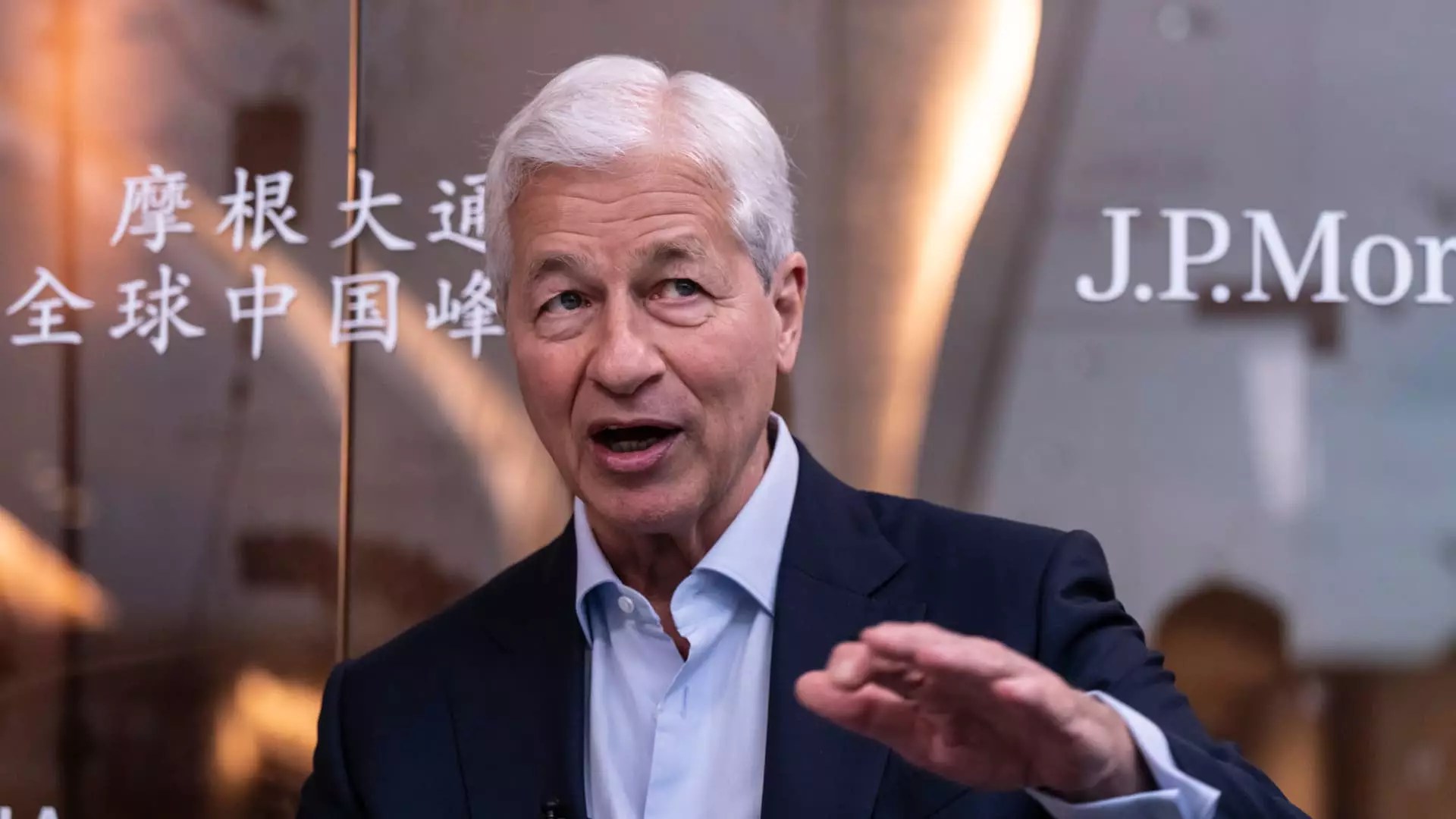In the realm of online investing, it’s easy to get lost in a sea of players. Once trailing behind more established platforms like Charles Schwab and E-Trade, JPMorgan Chase now views its entrance into this competitive domain as a revolutionary landmark. The unveiling of their new mobile app tools aimed at enhancing the bond purchasing experience marks a significant shift in the bank’s strategy. With this bold move, JPMorgan seeks to redefine the engagement with individual investors, who, despite trading infrequently, showcase an appetite for compelling investment opportunities.
Gone are the days when JPMorgan hesitated at the prospect of online trading. With keen insight and aggressive adjustments led by industry veteran Paul Vienick, they are now setting their sights on taking a commanding lead. But why is this transformation so crucial, and does it truly reflect a genuine commitment to innovation in their product offerings?
A Streamlined Approach to Fixed Income
It’s admirable that JPMorgan recognized the urgency for simplicity in the fixed-income investing sphere. Investors today yearn for streamlined experiences similar to those that have been established in the stock and ETF markets. By integrating customized screens and comparative analysis features directly into their banking app, JPMorgan provides a one-stop shop for investors looking to diversify into bonds and brokered CDs. This is not just an enhancement; it’s a necessity in the modern financial landscape.
However, the reality is that while JPMorgan’s intentions sound impressive on paper, execution remains key. The bank’s past setbacks, including the misalignment of branding in their initial “You Invest” platform, raise questions about their ability to effectively engage the user base they’re now courting. Even after reintegrating the self-directed investing platform into their core offerings, skepticism persists about whether they can truly rival their more agile counterparts that have mastered the art of customer-centric design.
The Challenge of Competition
Claiming a leadership status while bolstering their assets under management reveals an ambitious but precarious balancing act. As JPMorgan pushes towards a target of $100 billion in assets, it’s essential to recognize that this figure might appear meager when juxtaposed against industry giants that have dominated the market for decades. Breaking free from the perception of being a traditional banking institution will require not just technical improvements but also a cultural shift within the organization.
Critics may argue that JPMorgan Chase is lagging behind in providing digital investment experiences reflective of current market needs. While the capital and resources at their disposal offer them a cushion, that alone won’t guarantee the authenticity of their offerings or customer loyalty. The banking giant’s previous missteps imply that they must adopt a more consumer-driven philosophy, ensuring that what they present resonates with the evolving expectations of self-directed investors.
Mobilizing Resources: Strategic Integration
The potential for JPMorgan to dominate the self-directed investing landscape is not merely wishful thinking. With a robust branch network and a recognizable brand reputation, the bank is uniquely positioned to leverage its existing customer base. Their efforts to encourage users to consolidate their financial activities with JPMorgan—moving from banking to investing under one roof—could potentially create a seamless financial experience.
But this strategy is fraught with risks. The integration must translate into real value for customers. Offering up to $700 for moving funds is attractive, but it’s imperative that JPMorgan also cultivates an environment that fosters user engagement, education, and genuine investment satisfaction. Financial services don’t merely hinge on incentives; they thrive on trust and consistent positive experiences.
The Road Ahead: A Collaborative Financial Future
Vienick’s vision of the self-directed investing business blossoming into a trillion-dollar empire is optimistic. However, turning that vision into reality will require consistent innovation and a commitment to prioritizing user experience. As JPMorgan continues to refine its offerings, the expectation will be not just to catch up to competitors but potentially to outclass them.
Strategically, the firm must embrace the next wave of investment technologies, integrating features like after-hours trading capabilities, which could attract a more involved investor demographic. This will not only enhance their product suite but provide their customers with the flexibility and modernity that other platforms offer.
In an industry that continuously evolves, JPMorgan Chase’s ambitious pivot toward a more robust online presence in investing might just be the catalyst needed to establish a new benchmark in the banking and investment landscape. The stakes are high, but the rewards for those who navigate this transformation successfully could redefine their legacy in the financial world.


Leave a Reply